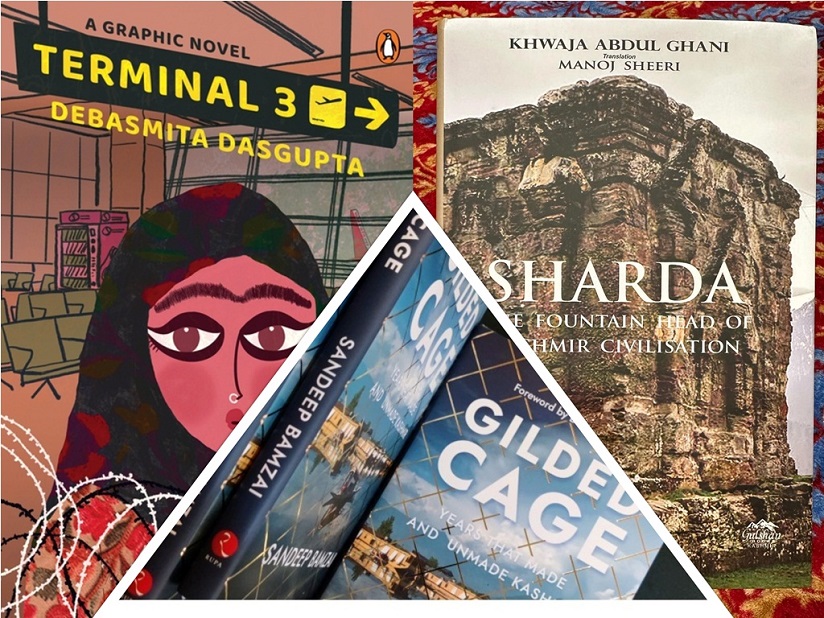
By Rhys Gonsalves
FOLLOWING author-architect Hakim Sameer Hamdani’s ambitious new book Shiʿism in Kashmir: A History of Sunni-Shiʿi Rivalry and Reconciliation panning out Kashmir’s polemic past, a bunch of new books are now adding some unknown details to Kashmir as a subject. Some of these volumes are highlighting different shades and shadows of the valley in context with the prevailing situation.
Among the new tomes is Sandeep Bamzai’s Gilded Cage – Years that made and unmade Kashmir.
As another political trip down the region’s chequered history, the book is the third and final part of the trilogy on Kashmir. It chronicles the tumultuous years that resulted in the ‘Kashmir issue’ being made and unmade.
The book captures the emergence of Sheikh Abdullah in Kashmir politics to his arrest and the disillusionment of the masses with his leadership.
Kashmir has become a caged match, the author asserts, where things have caused and continue to cause consternation.
From Jinnah’s Kashmir interest to Sheikh Abdullah’s vehement hatred for the former, the books notes Jawaharlal Nehru’s understanding of the valley as a shop-window for his brand of secular politics as well as mentions Maharaja Hari Singh’s determination to remain independent in the face of both India and Pakistan.
Among the new releases is Dr.Sunaullah Pampori’s Shama-e-Irfan—a book containing a message for young people. It’s already being hailed as a “captive commentary” on the prevailing state of affairs.
The book reflects the existing issues of the society, such as drug addiction, technology dependence, and the avoidance of book reading.
It took a doctorate in Arabic who served in the Education Department in various capacities for 18 years to complete the book.
In the league of new releases, Khwaja Abdul Ghani’s Sharda – The fountain head of Kashmir civilisation – is also creating a lot of traction.
Translated by police officer Manoj Sheeri, Ghani’s book entices readers to delve into the forgotten past and connect it to the present, highlighting the continuity of traditions and cultural practices in the subcontinent.
Apart from some sons of the soil, literary attempts made by non-Kashmiris are also fuelling the new release dates in the valley.
For instance, Debasmita Dasgupta’s Terminal 3 remains a much-anticipated graphic novel set in Kashmir. The main character, a Kashmiri girl, is nervously waiting to board a plane at Terminal 3 of New Delhi International Airport to represent India in an international jiu-jitsu tournament. She also reflects on her complicated past, growing up against the insurmountable difficulties of life in Kashmir.
She has persevered between happiness and emptiness, desire and grief, penance and peace. She imagines that one day her life will be a paradise. The novel, set against a backdrop of strife, tells the story of ordinary people attempting to live their dreams in the valley.
Follow this link to join our WhatsApp group: Join Now
Be Part of Quality Journalism |
Quality journalism takes a lot of time, money and hard work to produce and despite all the hardships we still do it. Our reporters and editors are working overtime in Kashmir and beyond to cover what you care about, break big stories, and expose injustices that can change lives. Today more people are reading Kashmir Observer than ever, but only a handful are paying while advertising revenues are falling fast. |
| ACT NOW |
| MONTHLY | Rs 100 | |
| YEARLY | Rs 1000 | |
| LIFETIME | Rs 10000 | |













